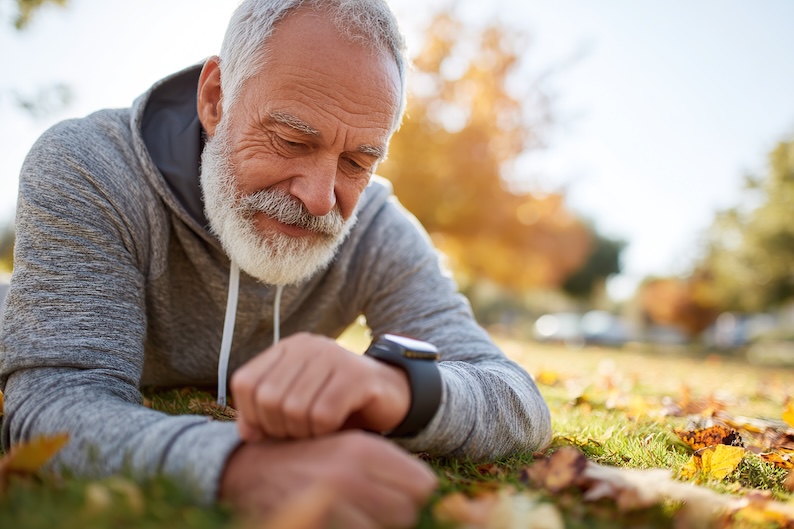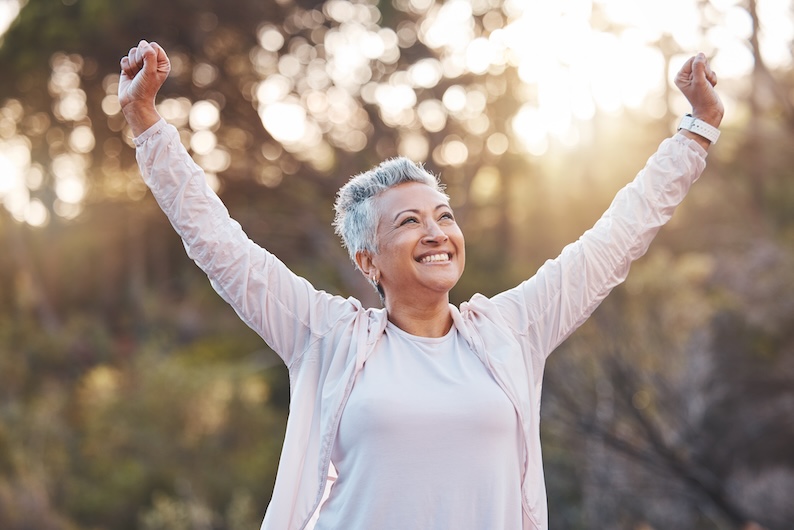Your core muscles are some of the most important muscles in your body. They're essential for your mobility and help you stay stable when you're walking, standing, or sitting. It's easy to see why core exercises for seniors are vital for your health.
Why Your Core is Important
When you think of core muscles, you probably just think of your abs, the six-pack. In reality, it's a lot more than that. Your core muscles extend from just below your head down to your pelvis. Many of them are ones you can't even see, so they get forgotten about. So, if you can't see a lot of those muscles, what's the point of strengthening them? The National Council on Aging says every 11 seconds an older adult is treated in the emergency room after falling. Strengthening your core will make you less likely to experience those falls. Your balance and stability will be much better. If you ever do lose your balance, you'll be able to engage those muscles to help regain your balance instead of hitting the ground. Someone with a strong core will also tend to have a better posture, which helps to eliminate lower back pain and makes you less prone to other muscle injuries.
5 Core Exercises for Older Adults
One of the cool things about core work is that you don't need any special equipment like you often do for working out other muscle groups. You can start right now no matter what your fitness level is. Most of these are seated core exercises for seniors, but a couple of them will have you out of your chair.
Abdominal Bracing
This is the simplest exercise you can do, and it's a great place to start if you're just easing yourself into exercising. All you have to do is stand up tall and make sure you've got a nice, straight posture. Pull those shoulders back and make sure you're not slouching. Now pull your belly button in towards your spine. You should feel your abdominal muscles tightening and helping to keep you nice and straight. Remember to keep breathing normally and just focus on keeping that belly button pulled in as long as you can. That's it. It might seem like nothing, but it can go a long way to improving your posture and training your core. Practice this several times a day. Before you know it you will be doing it all the time without even noticing.
Seated Knee Lifts
For a nice progression from your abdominal bracing, you can start taking on some seated knee lifts. These are another great place to start because it can be as strenuous as you want it to be. You'll need a sturdy chair to sit in, something like a chair from your dining table. Sit near the edge of the seat with your feet flat on the floor. You don't want to be leaning against the seatback. Make sure you're sitting up straight and holding that good posture. You can hold the sides of the seat with your hands to make sure you don't fall. Now, engage your abs like you're doing abdominal bracing, then lift one leg a few inches off the ground. Hold it there for about five seconds. Lower that leg back to the ground, and repeat with the opposite leg. Do this seven or eight times. As you get stronger, you'll be able to add more repetitions to get an even better workout. If you get to a point where it's just too easy, try sitting flat on the floor with your feet in front and do leg lifts.
Seated Side Bends
While you're in the chair doing your knee lifts, you can also try these side bends. Stay seated just like you were for the knee lifts (you're still sitting up tall with that good posture, right?). Now, touch the sides of your head with either hand and hold your elbows out. Breathe out and bend to one side. Be sure not to lean forward, though. You want to go directly to the side to work the proper muscle. Hold that position for two seconds before you sit back up straight. Now do the same thing on the other side. You'll want to do this about six or eight times. This exercise will work the sides of your abdominals, known as the oblique muscles. Just like with the knee lifts, you can work up to sets of 10 or 12 reps, and you can try it standing up once you feel like you're ready for a new challenge.
Deadbug
This maneuver is a little more difficult. You'll start by lying down on the floor on your back. Now lift your feet off the ground and bend your knees into a 90 degree angle. Lift your arms so you're pointing directly at the ceiling. Once you're in this base position, pull your belly button in towards your spine to engage the core (just like with abdominal bracing) and lower one foot towards the floor. Keep your knee bent the whole time. Once you've touched the ground, lift your leg back up into its original position, and then repeat with the other leg. There are a few variations on this exercise you can do to make it a little easier or harder. It may be a little easier if you bring your arm above your head instead of lowering your legs. Do one arm at a time, and keep your legs raised the whole time. To make it more challenging, try doing one arm and one leg at the same time. Make sure you're doing opposite arms and legs, though. For example, if you're lowering your right leg, you'll lower your left arm at the same time, and vice versa. That's all a little confusing at first, so you can check out this video to see exactly how the movements go.
Bridge
The bridge is the most difficult of the exercises we'll explain. This one focuses on working your lower back muscles and glutes. For the starting position, lay face up on the floor, and put your legs at a 90 degree angle. Keep your knees bent and feet flat on the ground with your hands at your sides. Now you'll use your glutes to push your hips upward, pulling your butt off the ground. Push through your heels to keep your feet planted. Lift your hips as high as you can before slowly lowering back to the floor. Repeat that move five to 10 times.
Go Get That 6 Pack
Those five core strengthening exercises for seniors can get you a long way to having better balance. If you're able to do those moves, you'll be much safer going about your daily business because you'll be more stable and less likely to fall. That core strength will give you the added bonus of having less back pain and having an easier time doing many things like reaching and bending down.




